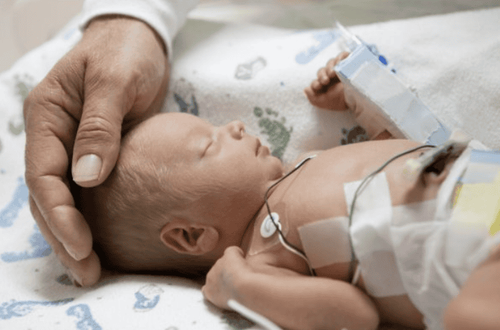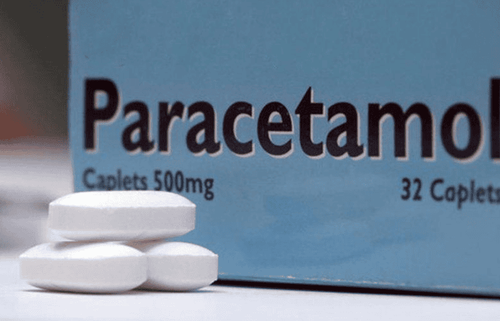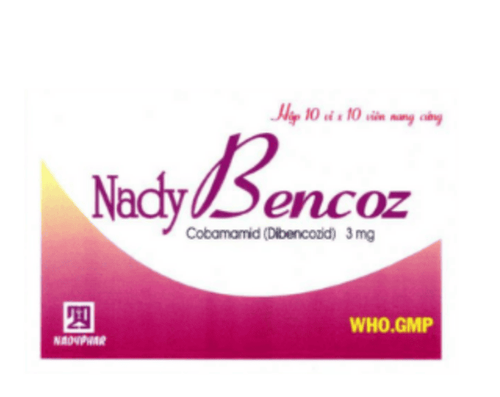This is an automatically translated article.
The article is professionally consulted by Master, Doctor Phan Thi Cam Van - Neonatologist - Pediatrics - Neonatal Department - Vinmec Danang International General Hospital. He has 07 years of experience as a Resident Doctor and a Pediatrician - Neonatal Doctor at Hue Central Hospital and Hue University Hospital of Medicine and Pharmacy. In particular, he has strengths in newborn care and treatment, neonatal resuscitation, respiratory, digestive, infectious diseases.Acute respiratory failure in infants is a relatively dangerous condition that can even lead to death. Therefore, parents should know about this syndrome in order to have the most perfect way to care for their children, avoiding unwanted dangers that may occur.
1. What is acute respiratory failure in infants?
Acute respiratory failure is a disorder in the ability of gas exchange between the alveoli and capillaries leading to a decrease in O2, an increase in CO2 and a decrease in arterial blood pH. Acute respiratory failure is a very common syndrome in the neonatal period, especially in the first days after birth. It is the leading cause of death in the neonatal period, especially for premature babies.
Acute respiratory failure can occur right after birth or after a few hours, it can also be a few days, respiratory failure will cause a lack of oxygen for the needs of the organs, especially the heart and brain, causing CO2 to accumulate. respiratory acidosis.
2. Causes of respiratory failure in children in the first days after birth
2.1. Pulmonary causes Inner membrane disease This is a syndrome either due to lack of number and maturation of lung cells (cells that produce surfactant) or due to stress such as asphyxia, hypovolemia, acidosis , hypothermia, hypoglycemia, maternal use of sedatives, bleeding in the mother interferes with the production of surfactant by lung cells.
Aspiration syndrome of amniotic fluid, meconium Inhalation of meconium, amniotic fluid often occurs in full-term or old-term infants (accounting for 5% of the amniotic fluid tinged with meconium) asphyxia due to fetal distress or placental ischemia should occur. the first breathing action before birth, causing airway obstruction by meconium, amniotic fluid. The cause is seen in cases of difficult birth, prolonged labor, and uterine contractions.
Pneumonia The causative agent can be bacteria (streptococcal, E. Coli, Listeria...) or viral, due to infection before, during or after birth. Group B streptococcal pneumonia can be confused with endocarditis. There is a history of premature rupture of membranes (the frequency of infection increases with the time it takes to break) or the mother has a fever.

Trẻ sơ sinh dễ gặp suy hô hấp cấp những ngày đầu sau sinh
2.2. Extrapulmonary causes Congenital heart diseases
Approximately 1% of live births. Congenital heart diseases with cyanosis: major vessel translocation, abnormal pulmonary venous return, tetralogy of Fallot, pulmonary artery stenosis, tricuspid valve atrophy... Heart failure with heart failure: left heart hypoplasia, aortic stenosis, supraventricular tachycardia... Other congenital malformations
Diaphragm hernia: with 80% occurring on the left side, it manifests at birth as severe respiratory distress with raised chest, The abdomen is concave and the heart sounds are clearly heard on the right side. Esophageal atrophy with tracheoesophageal fistula: About 1/3000 live births. It is manifested by extrusion of secretions in the mouth, the child is pale and struggling from time to time. Posterior narrowing of the nostrils: pink baby when crying, purple when sleeping and especially purple difficulty breathing when the baby sucks. Neurological diseases
Brain hemorrhage, meningoencephalitis, cerebral hypoxia, cerebral edema, purulent meningitis... can all cause respiratory depression and disorders. In addition to respiratory failure, the child has abnormal neurological manifestations such as convulsions, bulging fontanelles, increased muscle tone... Metabolic diseases
Increased, low blood sugar; increase and decrease the electrolytes; hypothermia...can be a primary or secondary cause of respiratory failure.
3. Symptoms of respiratory failure in children
Breathing disorders: the child has shallow, fast, irregular breathing, breathing rate > 60 times/minute. Purple or pale skin, occurring on the whole body or around the lips and extremities. Shortness of breath, contraction of the chest and intercostal muscles, concave sternum. Movements of the chest and abdomen are not rhythmic with breathing. The nostrils rise and fall, there is a groan when exhaling. At this time, the child's body is lacking oxygen, if not treated promptly and properly, the child is very likely to die. While preparing to take the child to the hospital, the family needs to do a few things right away:
Clear the airway, especially for a child with respiratory failure due to choking on milk or sputum. Use a towel or gauze pad to clean the baby's mouth and throat. Quickly aspirate the child's nose, do it quickly and gently, to avoid injuring the child's oral mucosa. Loosen clothes and diapers so that the baby can breathe easily. Warm your baby with blankets and warm water bags. Hold the baby in a high head position, slightly tilted back to make it easier for the baby to breathe. On the way, if the child is not breathing, you must flick the heel or gently rub the chest area to stimulate the child to breathe.

Triệu chứng suy hô hấp ở trẻ
4. Prevention of respiratory failure in children
Because acute respiratory failure often occurs in premature babies, when pregnant, pregnant women need to pay attention to regular check-ups according to the schedule, maintain a diet to improve physical health, know how to prevent premature birth and asphyxia. in the uterine cavity. If the mother has chronic diseases, it should also be treated early before giving birth, with medical facilities needing to detect the child's risks early for timely intervention.
Respiratory failure is a dangerous disease that, if not detected early and intervened in time, can lead to death due to lack of oxygen and respiratory failure.
Primary surfactant deficiency in premature infants causes respiratory distress syndrome in premature infants. Surfactant pump technique to treat respiratory failure is currently being performed at Vinmec Nha Trang International Hospital since April 2019.
Surfactant pumping technique will be difficult to perform if the general standard of care is not of high quality. Vinmec has met strict criteria to apply Surfactant Therapy in the treatment of respiratory failure in infants, including a full range of supportive facilities and a team of doctors who are proficient in the following techniques: Intubation, use of ventilators, treatment of respiratory and circulatory emergencies, treatment of pediatric patients with pneumothorax.
With a team of experienced and professional doctors from Pediatrics Department at Vinmec Nha Trang:
Doctor Nguyen Thanh Hung Doctor Huynh Bao Toan Doctor Ngo Thi To Nga Doctor Dang Huy Toan Doctor Doan Ngoc Quynh Tram Doctor Nguyen Hoang The Nhan If the child is found to have signs of respiratory failure, surfactant should be used for early treatment. The clinical benefits of this therapy are: improving pulmonary ventilation, enhancing blood oxygenation, reducing the frequency of air leaks (complications with pneumothorax, alveolar congestion...), reducing mortality. and diseases for children, reducing the rate of serious disability.
Please dial HOTLINE for more information or register for an appointment HERE. Download MyVinmec app to make appointments faster and to manage your bookings easily.













